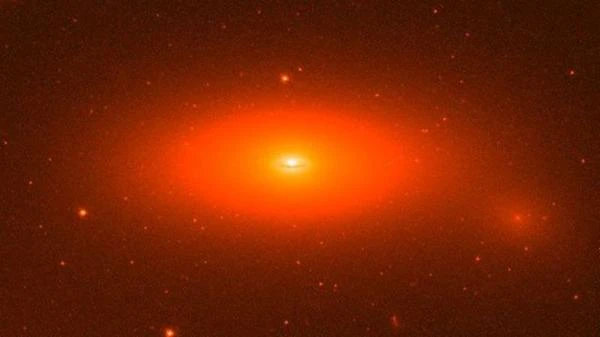
Black Holes are massive objects whose gravitational field is so intense that it prevents any form of matter or radiation from escaping, including stars, planets, matter, energy, and even light. Black holes are described by the theory of general relativity. When the core of a dead star is too massive to become a neutron star, it contracts inexorably until it forms this mysterious astronomical object: the black hole.
Stellar black holes have a mass ranging from a few solar masses to billions of solar masses. They are born following the gravitational collapse of the residue of massive stars. A man already predicted in the 18th century the existence of dark stars, the British physicist, astronomer, and geologist, John Michell (1724-1793). In his notes, he writes that when a star becomes too massive, it attracts light under the influence of its gravitational force. However, as his calculations give a density of the star corresponding to 18 billion tons in a cm³, he concludes that this cannot exist.
NGC 1277 is a lenticular galaxy located in the Perseus cluster, about 220 million light-years from Earth. Discovered in 1875 by the Irish astronomer Lawrence Parsons (1840-1908), this galaxy has become a privileged object of study since the revelation in 2012 of its exceptionally massive central black hole. This unique system challenges standard models of galaxy formation and offers astrophysicists a unique window into the extreme processes governing the evolution of galaxies.
The supermassive black hole at the heart of NGC 1277 has remarkable properties:
The astrophysical implications of the discovery of the supermassive black hole in NGC 1277 are profound and challenge several paradigms in galactic astrophysics.
In the standard model, galaxies and their central black holes evolve together: the mass of the black hole is correlated with global properties of the galaxy, such as stellar velocity dispersion (M–σ relation), bulge mass, or spheroidal luminosity. But in NGC 1277, the black hole represents ≈ 14% of the stellar mass, compared to ≈ 0.1% to 0.5% usually. This major disagreement suggests that:
Some models suggest that the black holes of galaxies like NGC 1277 would have formed very early (z > 2), during the first phases of galaxy formation, in very dense environments favorable to rapid growth (sustained quasi-Eddington accretion, rapid mergers, etc.). NGC 1277 could therefore host a fossil black hole from the quasar era, which has remained relatively inactive since.
NGC 1277 is a compact, lenticular galaxy with very little star formation activity, featuring an old stellar population (> 10 Gyr) and little gas. This makes it a relic galaxy:
If other compact and ancient galaxies like NGC 1277 also harbor disproportionate black holes, then:
The extreme mass of NGC 1277's black hole (up to 1.7×10¹⁰ M☉) makes it a candidate for testing general relativity in the strong regime:
The study of this system relies on several complementary techniques:
| Technique | Instrument | Key Results |
|---|---|---|
| Integral Field Spectroscopy | HET (Hobby-Eberly Telescope) | Stellar velocity dispersion |
| High-Resolution Photometry | Hubble Space Telescope | Central luminosity profile |
| Gas Kinematics | ALMA | Dynamics of the interstellar medium |